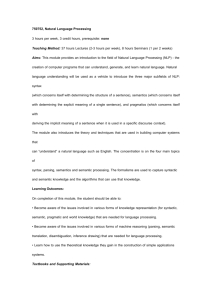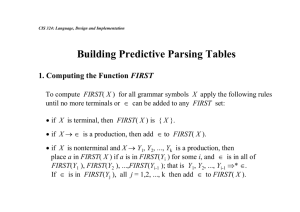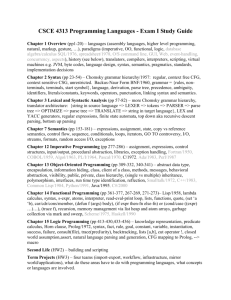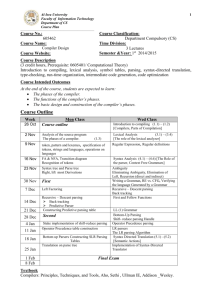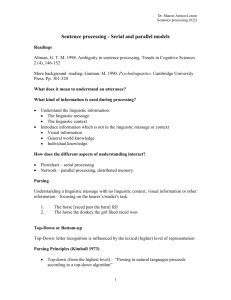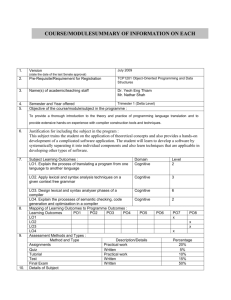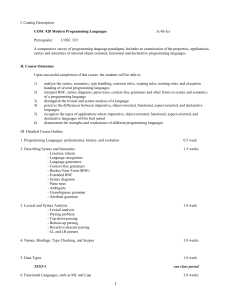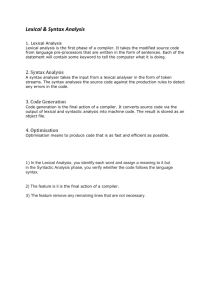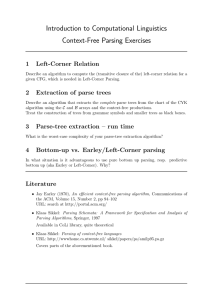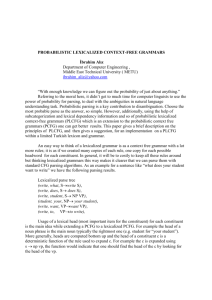kempson-purver04cuny
advertisement
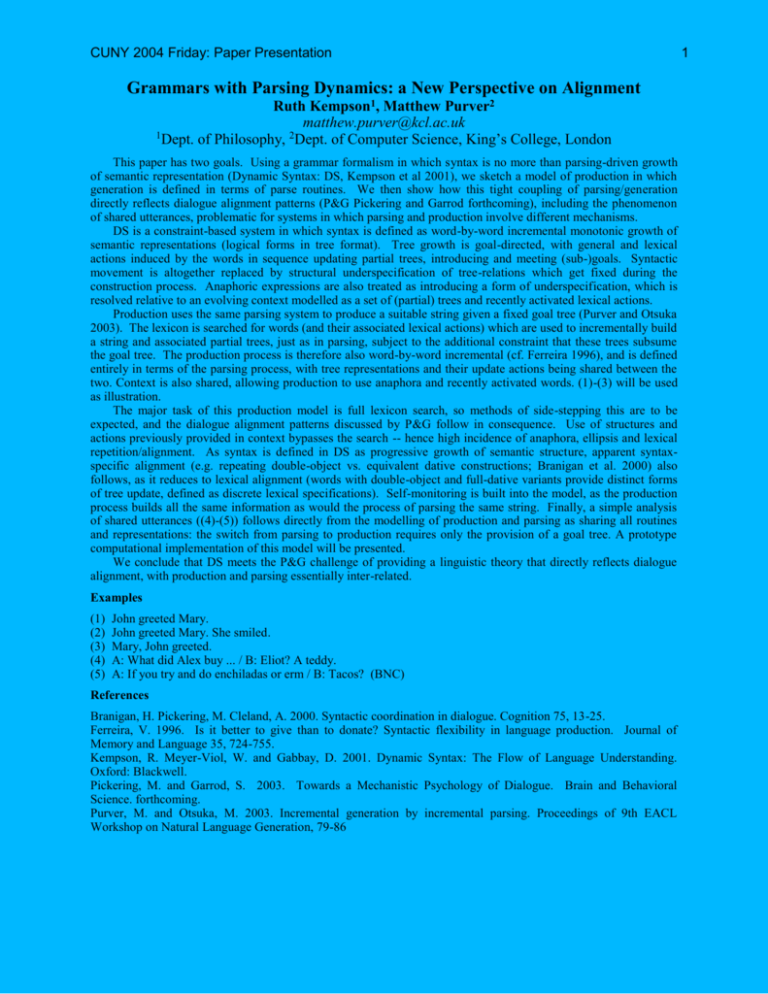
CUNY 2004 Friday: Paper Presentation Grammars with Parsing Dynamics: a New Perspective on Alignment Ruth Kempson1, Matthew Purver2 matthew.purver@kcl.ac.uk 1Dept. of Philosophy, 2Dept. of Computer Science, King’s College, London This paper has two goals. Using a grammar formalism in which syntax is no more than parsing-driven growth of semantic representation (Dynamic Syntax: DS, Kempson et al 2001), we sketch a model of production in which generation is defined in terms of parse routines. We then show how this tight coupling of parsing/generation directly reflects dialogue alignment patterns (P&G Pickering and Garrod forthcoming), including the phenomenon of shared utterances, problematic for systems in which parsing and production involve different mechanisms. DS is a constraint-based system in which syntax is defined as word-by-word incremental monotonic growth of semantic representations (logical forms in tree format). Tree growth is goal-directed, with general and lexical actions induced by the words in sequence updating partial trees, introducing and meeting (sub-)goals. Syntactic movement is altogether replaced by structural underspecification of tree-relations which get fixed during the construction process. Anaphoric expressions are also treated as introducing a form of underspecification, which is resolved relative to an evolving context modelled as a set of (partial) trees and recently activated lexical actions. Production uses the same parsing system to produce a suitable string given a fixed goal tree (Purver and Otsuka 2003). The lexicon is searched for words (and their associated lexical actions) which are used to incrementally build a string and associated partial trees, just as in parsing, subject to the additional constraint that these trees subsume the goal tree. The production process is therefore also word-by-word incremental (cf. Ferreira 1996), and is defined entirely in terms of the parsing process, with tree representations and their update actions being shared between the two. Context is also shared, allowing production to use anaphora and recently activated words. (1)-(3) will be used as illustration. The major task of this production model is full lexicon search, so methods of side-stepping this are to be expected, and the dialogue alignment patterns discussed by P&G follow in consequence. Use of structures and actions previously provided in context bypasses the search -- hence high incidence of anaphora, ellipsis and lexical repetition/alignment. As syntax is defined in DS as progressive growth of semantic structure, apparent syntaxspecific alignment (e.g. repeating double-object vs. equivalent dative constructions; Branigan et al. 2000) also follows, as it reduces to lexical alignment (words with double-object and full-dative variants provide distinct forms of tree update, defined as discrete lexical specifications). Self-monitoring is built into the model, as the production process builds all the same information as would the process of parsing the same string. Finally, a simple analysis of shared utterances ((4)-(5)) follows directly from the modelling of production and parsing as sharing all routines and representations: the switch from parsing to production requires only the provision of a goal tree. A prototype computational implementation of this model will be presented. We conclude that DS meets the P&G challenge of providing a linguistic theory that directly reflects dialogue alignment, with production and parsing essentially inter-related. Examples (1) (2) (3) (4) (5) John greeted Mary. John greeted Mary. She smiled. Mary, John greeted. A: What did Alex buy ... / B: Eliot? A teddy. A: If you try and do enchiladas or erm / B: Tacos? (BNC) References Branigan, H. Pickering, M. Cleland, A. 2000. Syntactic coordination in dialogue. Cognition 75, 13-25. Ferreira, V. 1996. Is it better to give than to donate? Syntactic flexibility in language production. Journal of Memory and Language 35, 724-755. Kempson, R. Meyer-Viol, W. and Gabbay, D. 2001. Dynamic Syntax: The Flow of Language Understanding. Oxford: Blackwell. Pickering, M. and Garrod, S. 2003. Towards a Mechanistic Psychology of Dialogue. Brain and Behavioral Science. forthcoming. Purver, M. and Otsuka, M. 2003. Incremental generation by incremental parsing. Proceedings of 9th EACL Workshop on Natural Language Generation, 79-86 1

